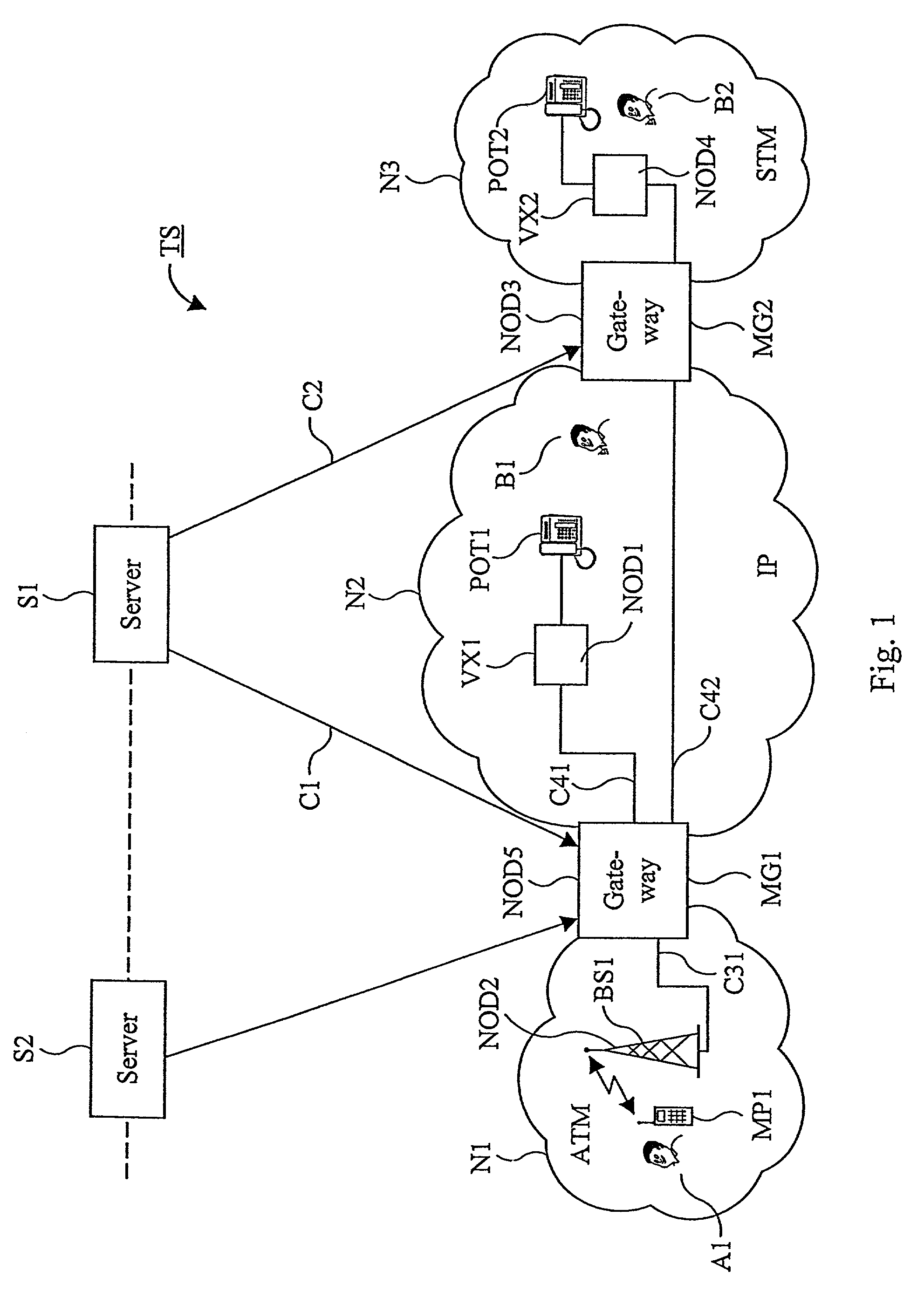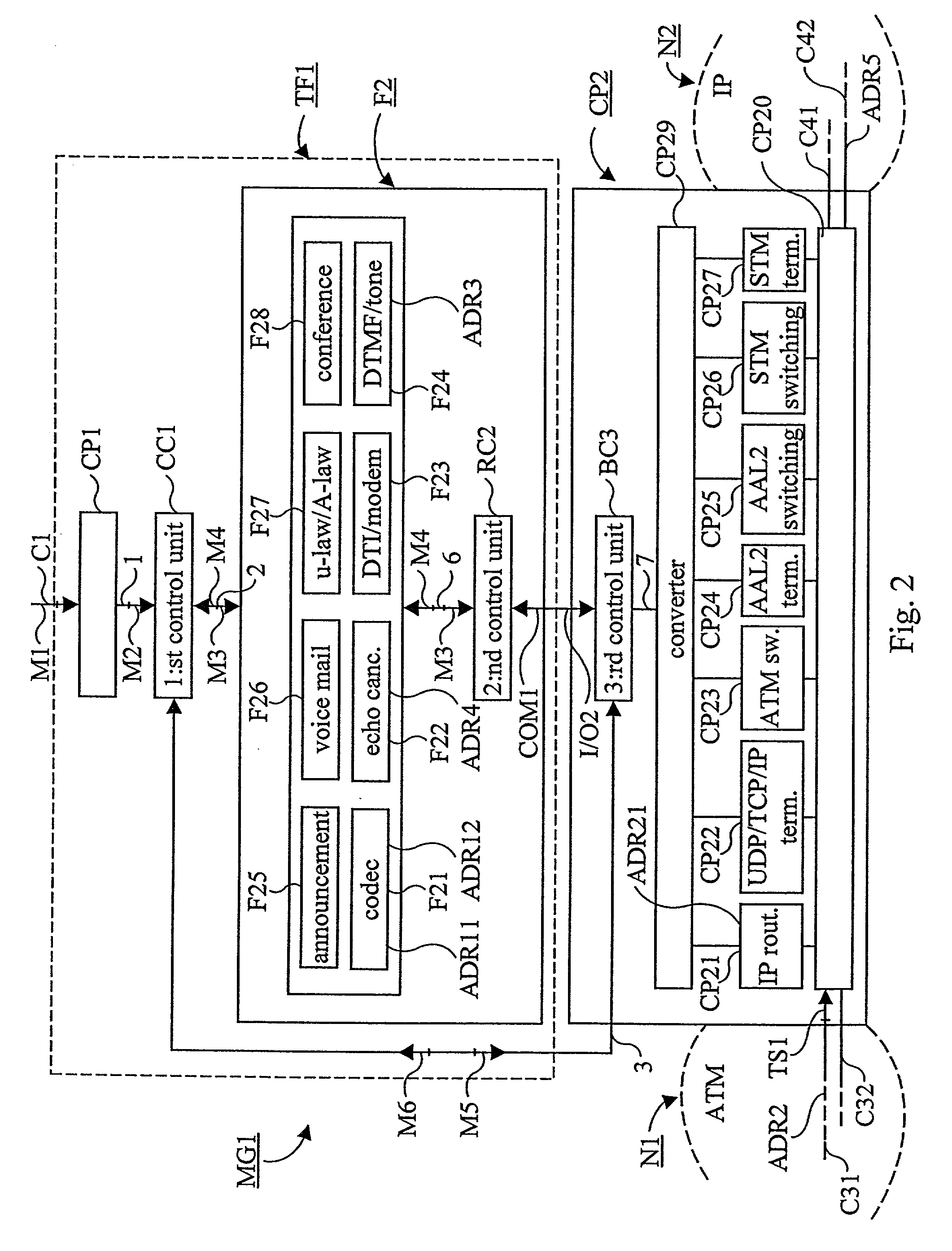Method and device in a coupling node for a telecommunication system
a technology of a coupling node and a communication system, applied in the field of method and device in a coupling node for a telecommunication system, to achieve the effect of effectively utilizing the internal communication resources of the node and the total processor capacity in the nod
- Summary
- Abstract
- Description
- Claims
- Application Information
AI Technical Summary
Benefits of technology
Problems solved by technology
Method used
Image
Examples
Embodiment Construction
[0039]FIG. 1 shows, as an example, a view of a part of a telecommunication system TS, comprising a first network N1, being an ATM-network, a second network N2, being an IP-network, and a third network N3, being a STM-network. The term ATM here stands for Asynchronous Transfer Mode. The second network 2 is, on one hand, connected to the first network N1 through a first gateway MG1 and, on the other hand, connected to the third network N3 through a second gateway MG2. The telecommunication system also comprises a control server S1 for controlling coupling of communications. The server S1 is connected to the gateway MG1 via a connection C1 and to the gateway MG2 via a connection C2. The Figure also shows that further servers, e.g. the server S2, takes part of the telecommunication system and are in this example connected to the gateway MG1. In the network N1 there is a first subscriber A1 with a mobile terminal MP1, which can be coupled to its network through a base station BS1. The ba...
PUM
 Login to View More
Login to View More Abstract
Description
Claims
Application Information
 Login to View More
Login to View More - R&D
- Intellectual Property
- Life Sciences
- Materials
- Tech Scout
- Unparalleled Data Quality
- Higher Quality Content
- 60% Fewer Hallucinations
Browse by: Latest US Patents, China's latest patents, Technical Efficacy Thesaurus, Application Domain, Technology Topic, Popular Technical Reports.
© 2025 PatSnap. All rights reserved.Legal|Privacy policy|Modern Slavery Act Transparency Statement|Sitemap|About US| Contact US: help@patsnap.com



